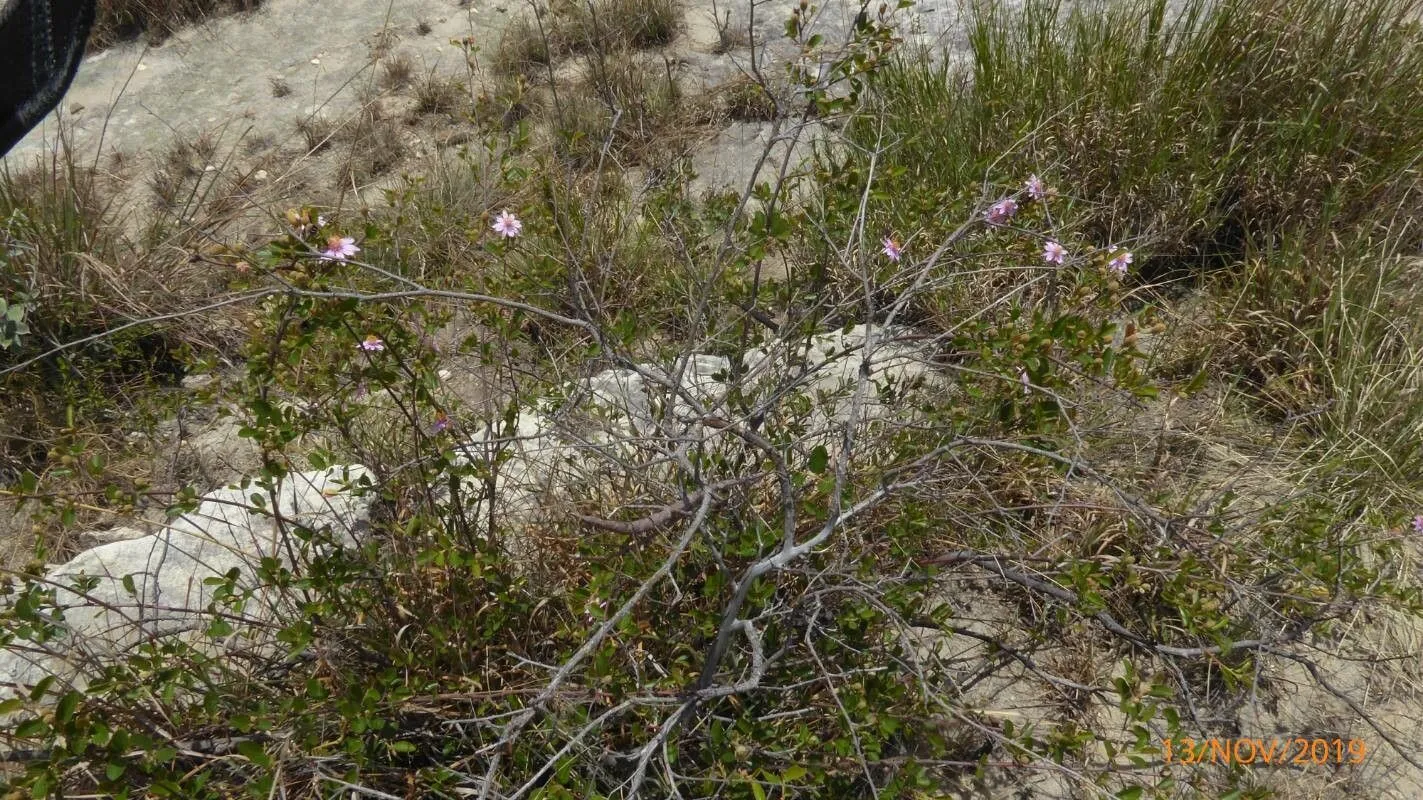
Author: (Hook. & Arn.) Nutt.
Bibliography: Trans. Amer. Philos. Soc., ser. 2, 7: 290 (1840)
Year: 1840
Status: accepted
Rank: species
Genus: Corethrogyne
Vegetable: False
Observations: Oregon to Mexico (N. Baja California Norte)
The Sand-aster, scientifically known as Corethrogyne filaginifolia, is a fascinating member of the Asteraceae family, encompassing a variety of flowering plants. First described in the “Transactions of the American Philosophical Society” in 1840 by Hooker & Arnott and later refined by Nuttall, this species is a resilient herbaceous perennial commonly found across a vast range of environments from Oregon to northern Baja California in Mexico.
Corethrogyne filaginifolia thrives in coastal scrub, chaparral, and dry woodlands, showcasing its adaptability to different climatic conditions. This plant is particularly notable for its slender, woolly stems that can grow up to three feet tall, topped with vibrant, daisy-like flowers. The blooms typically feature striking violet to lavender petals encircling a bright yellow center, creating a vivid contrast that is a visual delight in its native habitats.
The foliage of the Sand-aster is equally distinctive, with narrow, gray-green leaves that are densely covered in fine hairs, giving the plant a soft, silvery appearance. These leaves help the plant retain moisture, enabling it to endure periods of drought characteristic of its native regions.
Sand-aster is an important species for local ecosystems, providing nectar for a variety of pollinators, including bees and butterflies. Its ability to flourish in poor soil conditions also makes it a valuable plant for erosion control and habitat restoration projects.
In cultivation, Corethrogyne filaginifolia is prized for its low maintenance and aesthetic appeal. Gardeners appreciate this plant not only for its beauty and ruggedness but also for its ecological benefits. When planted in a garden setting, it brings a touch of natural splendor, attracting beneficial insects and supporting biodiversity.
Overall, the Sand-aster is a remarkable plant with a rich botanical history and significant ecological importance. Its resilience and stunning appearance make it a worthy addition to both natural landscapes and cultivated gardens.
Eng: california sandaster, common sandaster, sand-aster, whiteleaf sandaster
En: Sand-aster, California sandaster, Branching Beach-aster, California Aster, California Sand-aster, Common Sand Aster, Common Sand-aster, Del Mar Mesa Sand Aster, Del Mar Mesa sandaster, San Diego Sand-aster, San Diego sandaster, Tunbridge Filmy-fern, Common sandaster, Whiteleaf sandaster
Taken Jan 7, 2016 by EOL − Keir Morse (cc-by-nc-sa)
Taken Jan 7, 2016 by EOL − Keir Morse (cc-by-nc-sa)
Taken Sep 27, 2020 by Sasha Roper (cc-by-sa)
Taken Sep 27, 2020 by Sasha Roper (cc-by-sa)
Taken Jun 13, 2022 by Birgitta Tittel (cc-by-sa)
Taken Apr 20, 2019 by James James (cc-by-sa)
© copyright of the Board of Trustees of the Royal Botanic Gardens, Kew.
Growth habit>: Forb/herb, Subshrub
Family: Myrtaceae Author: (F.Muell.) K.D.Hill & L.A.S.Johnson Bibliography: Telopea 6: 402 (1995) Year: 1995 Status:…
Family: Rubiaceae Author: Pierre ex A.Froehner Bibliography: Notizbl. Bot. Gart. Berlin-Dahlem 1: 237 (1897) Year:…
Family: Sapindaceae Author: Koidz. Bibliography: J. Coll. Sci. Imp. Univ. Tokyo 32(1): 38 (1911) Year:…
Family: Asteraceae Author: A.Gray Bibliography: Pacif. Railr. Rep.: 107 (1857) Year: 1857 Status: accepted Rank:…
Family: Fabaceae Author: Medik. Bibliography: Vorles. Churpfälz. Phys.-Ökon. Ges. 2: 398 (1787) Year: 1787 Status:…
Family: Aspleniaceae Author: (Cav.) Alston Bibliography: Bull. Misc. Inform. Kew 1932: 309 (1932) Year: 1932…